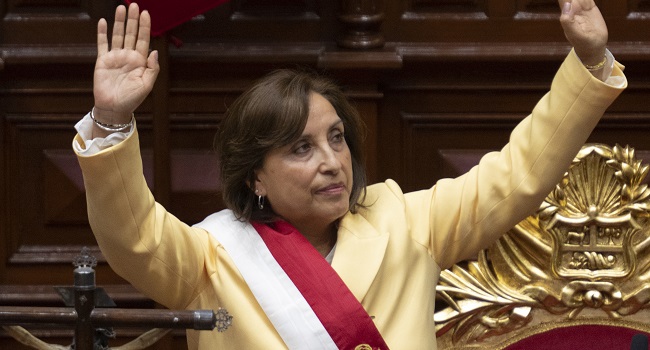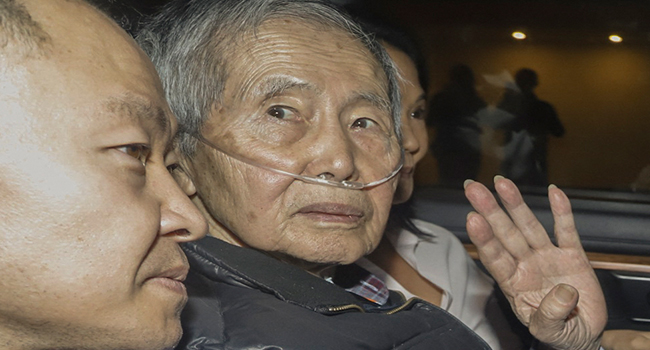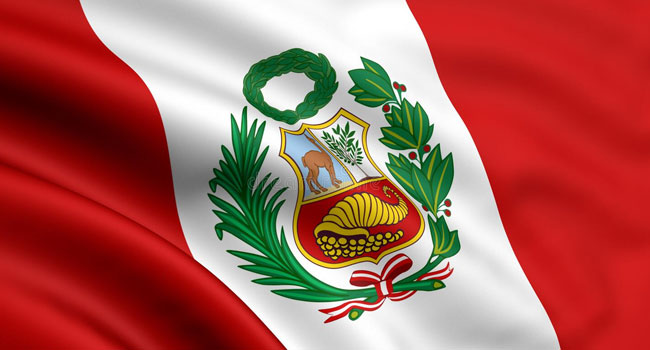After a fortnight-long break, Peruvians took to the streets again on Wednesday, blocking roads countrywide to demand the resignation of President Dina Boluarte, who took over from her ousted predecessor in December.
Protesters used stones and burning tires to barricade main routes in the southern regions of Puno, Cusco, Apurimac and Arequipa, as well as Junin in the center, chanting for Boluarte to leave.
Thirty of the country’s 195 provinces have been affected, according to the country’s rights ombudsman.
In downtown Lima, the capital, police dispersed dozens of demonstrators with tear gas as they tried to reach Congress, with some journalists hurt in the scuffles.
Tear gas was also used to break up hundreds of protesters in Arequipa.
Boluarte took over on December 7 as the South American country’s first woman president following the impeachment and arrest of Pedro Castillo after he tried to dissolve Congress and rule by decree.
Castillo, a leftist former rural school teacher and union leader, faced vehement opposition from Congress during his 18 months in office, and had been the subject of numerous criminal investigations into allegations of widespread graft.
His ouster sparked nationwide protests, with the ombudsman reporting 22 people killed in clashes and more than 600 injured.
Boluarte’s government declared a 30-day nationwide state of emergency, while she attempted to calm the uproar by seeking to bring forward elections.
The demonstrations died down over the holiday period, but by Wednesday had remobilized.
– ‘Delays, pain, economic losses’ –
“There are ten blockades, mainly around Puno,” government spokesman Alberto Otarola told reporters in Lima, where a crisis center was erected.
As a precaution, train service between the town of Cusco and the Inca citadel of Machu Picchu, a major tourist draw, was suspended indefinitely Wednesday, PeruRail said in a statement.
The move came after some 2,000 tourists were evacuated from the site, according to police.
“The airports are functioning normally,” said Otarola.
In the first wave of protests, thousands of tourists found themselves stranded for days at Machu Picchu and Cusco due to road, railway and airport blockades.
Public buildings and airports expecting protests were being guarded by police and soldiers deployed under the state of emergency.
In an interview with radio network RPP, newly appointed Defense Minister Jorge Chavez claimed that “infiltrators with terrorist backgrounds” were involved in the protests.
Authorities have accused people linked to the outlawed guerrilla group Sendero Luminoso (Shining Path), which sowed terror in Peru between 1980 and 2000, of whipping up the demonstrations.
But the protesters reject the accusations.
“Why are you calling me a terrorist, if the only thing I do is raise my voice in protest,” read a sign in Arequipa.
From Lima, Boluarte called on Wednesday for an end to the protests, which she blamed for “delays, pain, economic losses” and appealed instead for “peace, calm, unity to promote development of the homeland.”
Protest leader Milan Knezvich, in the mountainous Apurimac region, vowed the struggle will continue.
“No one will want to talk to her. As long as Mrs Dina Boluarte does not resign, this will continue,” he told Exitosa radio.
The new government has agreed to bring forward elections set for 2026 to April next year, but many want voting to happen even sooner.




